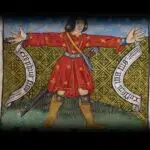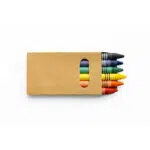We celebrate National Bunsen Burner Day on March 31, remembering the history of science and the inventor behind this important tool. Found in every high-school laboratory, the Bunsen Burner is a staple of our scientific education, as well as essential in professional laboratories, too. We’ve got all the facts, features, and fun activities to set your celebrations alight this National Bunsen Burner Day!
History of National Bunsen Burner Day
Robert Bunsen was born in Germany in 1811. His father was the chief librarian and professor of modern philology at the University of Göttingen where Bunsen later embarked on his undergraduate degree at the age of 17. He showed his aptitude for innovation early on and, within just two years, he had completed his Ph.D. and was offered a job there.
Bunsen enjoyed a significant breakthrough at the young age of 22 when he discovered the antidote to arsenic poisoning. But the invention he is best known for today, the Bunsen burner, became his pursuit in 1852 when he took a job at the University of Heidelberg, where he was promised a new laboratory for his work and teaching.
The building’s designers intended to use gas throughout for lighting as well as the laboratory burners. But gas burners were problematic due to the heat of the flame, as well as their simplicity. So whilst the builders got to work on Bunsen’s new lab, Bunsen himself also got to work designing a way to make gas burners more effective for laboratory use. He developed a gas-burning apparatus that would give different types of flame depending on the airflow, using Isaac Newton’s principle of light refraction to give four flames of different colors and intensities.
When the building opened in 1855, Bunsen had created 50 of his burners and, in 1857, he published a description of them so that his colleagues could adopt the design. Despite its success, he never patented the idea, as he believed that science should be for the benefit of all and not the profit of one. His design grew in popularity and is still used around the world today in schools and professional laboratories, hence the reason we celebrate National Bunsen Burner Day.
National Bunsen Burner Day timeline
Isaac Newton conducts experiments of bending white light through a prism to split its colors.
Robert Bunsen is born in Germany — the youngest of four sons to the University of Göttingen's chief librarian and professor of modern philology.
Robert Bunsen is promised a new laboratory by his employers at the University of Heidelberg and desires to make improvements to the existing facilities.
Robert Bunsen develops the new apparatus and makes prototypes with the help of the University of Heidelberg’s mechanic, Peter Desaga.
National Bunsen Burner Day FAQs
Can I use a Bunsen burner at home?
It’s safest to leave Bunsen burners in the controlled environment of a laboratory, but there are plenty of scientific experiments you can do at home without the need for one.
When was the Bunsen burner invented?
Bunsen began developing his idea in 1854 and by 1855 he had created 50 models for use by his students.
On which other days do we celebrate science?
National STEM/STEAM Day on November 8 is the perfect time to get your scientific brain whirring.
National Bunsen Burner Day Activities
Refract Light At Home
Recreate Newton’s refraction experiment at home by putting a small mirror into a glass of water and placing it in bright sunlight to make a rainbow.
Feast on German Food
Tuck into some of the delicacies that Robert Bunsen would have enjoyed in his lifetime, like sauerkraut (fermented cabbage) and sauerbraten (roast beef stew).
Invent something yourself
Honor this incredible invention by designing your own problem-solving device. Maybe you’ll leave a legacy like Robert Bunsen, too!
5 Facts About Robert Bunsen That Are Lit
He made a life-saving discovery
When working at the University of Göttingen at the age of 22, Bunsen discovered the antidote to arsenic poisoning and, 9 years later, his discovery saved his own life when an arsenic compound exploded in his face.
He helps you change the channel
In 1841, Bunsen invented the zinc-carbon cell, making batteries more affordable by replacing the expensive platinum of former designs with cheap carbon — these are the same batteries that still power most household gadgets like TV remotes and children’s toys.
He makes your photos brighter
In 1864, Bunsen and his research student Henry Enfield Roscoe used the bright light emitted from burning magnesium to illuminate photographs being taken in low light, thereby inventing flash photography.
He climbed into a volcano
In 1846 Bunsen traveled to Iceland to study volcanic activity — he carried out his tests and observations by climbing into the crater of a volcano, developing work that led to a greater understanding of the science behind geysers.
He was a fast-paced academic
Bunsen began his undergraduate degree at the University of Göttingen in Germany at the age of 17 but, just two years later, he had achieved his Ph.D. in chemistry for his work on a humidity meter.
Why We Love National Bunsen Burner Day
We love staying safe!
Bunsen burners make scientific experiments so much safer than they might otherwise have been, so we don’t get injured in the name of progress.
It’s about experimentation
National Bunsen Burner Day reminds us what a big impact even the simplest of ideas can have.
It keeps us curious
We use Bunsen burners to find out more about how things work, but you don’t need one to do this — just a curious mind!
National Bunsen Burner Day dates
| Year | Date | Day |
|---|---|---|
| 2026 | March 31 | Tuesday |
| 2027 | March 31 | Wednesday |
| 2028 | March 31 | Friday |
| 2029 | March 31 | Saturday |
| 2030 | March 31 | Sunday |

























